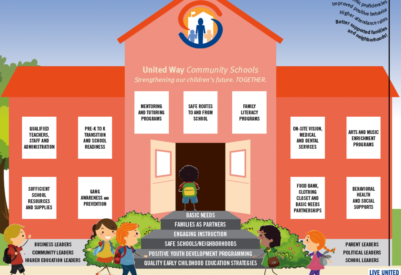
Historically, oppression and systemic injustices have been a collective experience among Black people living in the United States.
The United States was built on indigenous land on the backs of Black people. This is not new information. Yet, this inherited trauma is still influencing our present-day lives.
Simply put, what’s required to be well and thrive aren’t available for all Black people.
Foods that are commonly associated with Black American culture are often unfairly deemed as unhealthy.
Today’s fast-food versions of fried chicken and cured meats are a distant cousin of the delicacies that were enjoyed on special occasions throughout the old agricultural south.
Home cooks of the past were creative and seasoned greens with the ends of cured meats or slow cooked the less desirable cuts because this is what they had access to.
It’s no accident that today our neighborhoods are flooded with the fast and processed versions of soul food. Why is this?
Racism feeds social injustices like lack of access to jobs, safe housing, personal safety, and quality education. These factors are fundamental determinants of health and well-being.
Across the country, Black communities are disproportionately underfunded, resulting in a significant gap. Racism affects nutrition as a social determinant of health that has a major influence on Black people’s access to healthy food.
There are major structural and systemic inequities, and the nutrition and health-related impact within the Black community has been devastating.
Lack of access
Black communities in both rural and urban areas are more likely to experience food insecurity.
Markets are also redlined — the practice of excluding entire geographic areas from receiving resources — resulting in decreased access to full-service grocery stores.
On the other hand, Black communities often have excessive access to dollar stores and liquor stores that provide nutrient-poor, inexpensive shelf-stable items. These are known as food swamps Trusted Source and food deserts.
Access to basic, essential needs varies widely. It’s greatly dependent on environmental factors, including employment opportunities, safe and affordable housing, education, healthcare, and support through local policies. These issues, compounded with decreased availability and lower intake of nutrient-dense foods, increase the risk of noncommunicable diseases.
Financial barriers Without financial means to consistently purchase nutritious foods, food choices are driven by affordability. More often than not, this means they’re rich in added sugars, salts, and synthetic fats.
Historically, Black families haven’t had access to the same financial stability and resources as their white counterparts.
Other financial barriers include statistically lower household income and fewer opportunities for well-paying, livable-wage jobs.
Black communities often have limited access to financial literacy and savings, lower access to personal and business credit, and relatively lower generational wealth transfer.
There’s a major racial wealth gap detrimentally impacting the Black community.
Education
Many schools within Black communities are underfunded, leaving the children who attend these schools with fewer educational opportunities. This leads to a significant achievement gap.
Educational institutions in under-resourced Black communities often lag behind wealthier, adequately funded areas.
This impacts the quality of school lunches and educational resources, such as supportive educational curriculums highlighting health and nutrition.
Solutions
The quality of life within Black communities has been adversely impacted as a result of centuries of bias and hate. Structures need to be dismantled and rebuilt with equity at the forefront.
Funds need to be redistributed to support the most marginalized communities. Humane, quality healthcare needs to be provided to unburden communities that bear the brunt of metabolic diseases.
People in positions of power need to ask themselves how they can actively contribute to systemic change while dismantling racist practices. There are actionable and measurable steps that can be implemented to bridge these gaps.
Nutrition education
Community-based initiatives that meet community members where they’re at provide valuable knowledge related to health and nutrition. These strong community relationships support long-term change.
Redistribution of funds
The racial wealth gap in the United States continues to burden Black communities. It prevents them from breaking through the systemic barriers hindering wealth-building.
Reallocating funds from overfunded institutions, and instead investing in protecting and uplifting Black communities, could address this centuries-long financial oppression.
Put an end to food swamps
It’s important to be mindful of the ways we’re discussing and implementing food access in Black communities. Increasing access to food should be done from a community-centered approach — meaning working with the community to increase nutritious options based on the cultural foodways of community members.
Changing the food landscape of a community is more than simply moving in a full-service grocery store. A holistic approach should include open discussions with Black community members to identify what they want and need





